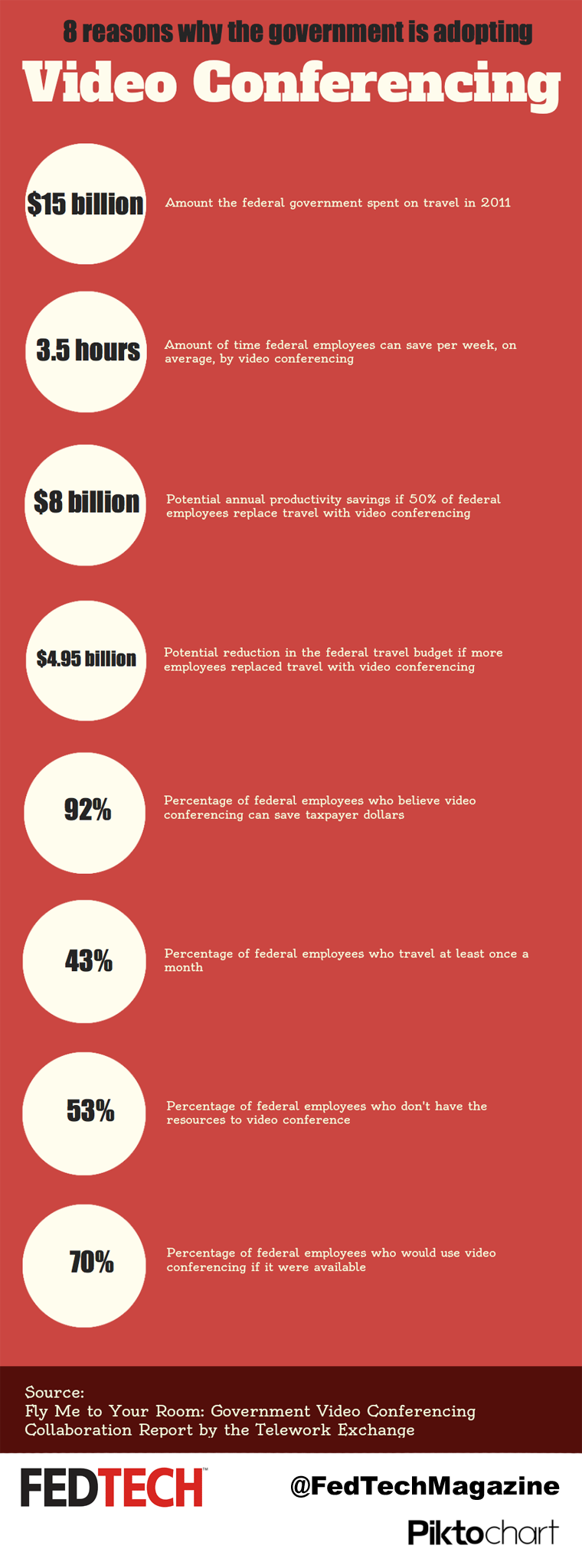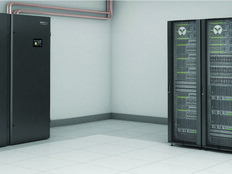8 Reasons Why the Government Is Adopting Video Conferencing [Infographic]
Technology not only offers the U.S. government the chance to offer better services to American citizens but also presents an opportunity to save a lot of money. In meeting those goal, power and cooling efficiency, BYOD and telework are areas where we have seen a lot of success. Video conferencing could be the next initiative to save money, boost productivity and improve morale.
Video conferencing allows employees to cut back on travel, which is a significant expense, costing more than $15 billion annually. Executive Order 13589, issued by President Obama on November 11, 2009, states:
[T]o ensure efficient travel spending, agencies are encouraged to devise strategic alternatives to Government travel, including local or technological alternatives, such as teleconferencing and video conferencing.
Read Executive Order 13589 here.
This week, Telework Exchange released “Fly Me to Your Room: Government Video Conferencing Collaboration Report,” which outlines quantifiable benefits of using video conferencing for meetings and teleworking. It also highlights key reasons why employees are not already using video conferencing, including bandwidth limitations, lack of managerial acceptance and an absence of viable hardware and software.
In the infographic below, we highlight eight important statistics that we learned form this report, which can be downloaded here.









